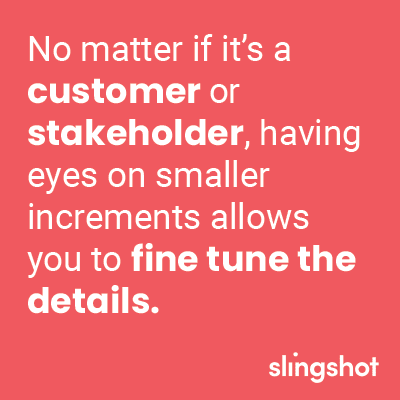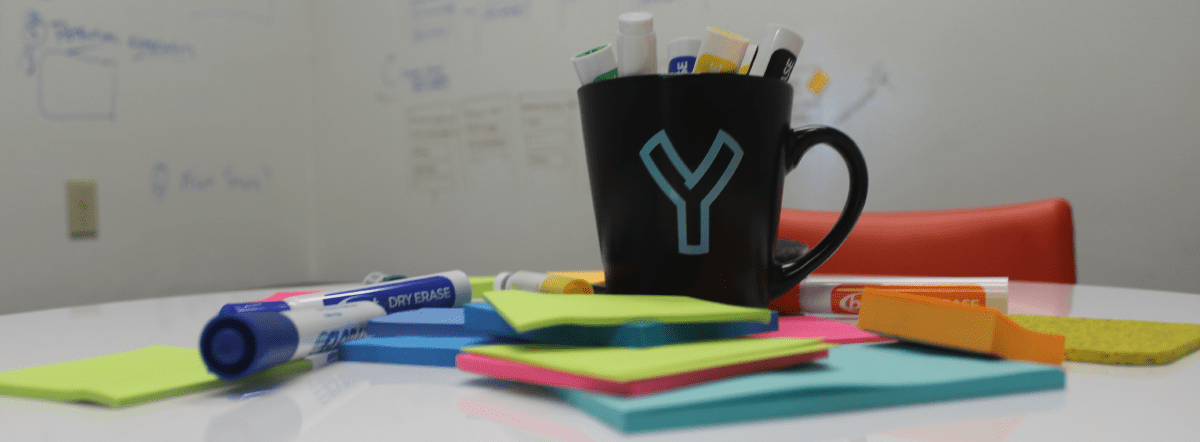Did you know there’s at least 12 different methodologies to build tech? Waterfall, Extreme, Agile, Rapid, and the list goes on – oh my!
But two stand out: Agile is widely popular, and Lean is one of the fastest growing methods. They’re both used in every level of development around the globe.
Did you know there’s at least 12 different methodologies to build tech? Waterfall, Extreme, Agile, Rapid, and the list goes on – oh my!
But two stand out: Agile is widely popular, and Lean is one of the fastest growing methods. They’re both used in every level of development around the globe.
Why these two? Check out what Lean and Agile are, and the similarity and differences between the two. By the end, you’ll know which one works best for you.
Summary
Lean focuses on utilizing user feedback early and often to build a product that better serves them. Agile centers on being adaptable to change and continuously iterating.
Both make a point on optimization, feedback, and snippet size. They differ on involvement, main goals, and speed.
What is Lean?
Lean methodology is a way of building and designing tech that focuses on getting feedback early and often. Toyota has been credited as the originator of this by using Lean methodology to manufacture cars.
Lean may have started with manufacturing, but works perfectly in tech. Instead of stopping a car part at each point in the manufacturing process for testing, you’re making pit stops along the development process to get feedback from users. Users are the biggest piece of Lean: without them, a product can’t be built using Lean methodology.
The seven principles of Lean are:
- Gather feedback from users early and often
- Eliminating waste by building an MVP
- Building quality into what you do
- Creating knowledge to be used later
- Deferring commitment until all information from users is available
- Respecting people and their ideas
- Optimizing the whole experience for everyone
Lean allows designers and developers to create apps through a process that puts the user first. It may take longer to get to an initial release, because of the constant talking and iterating with users, but there’s less chance of making major changes following launch.
What is Agile?
In early 2001, The Agile Alliance created what we now call the Agile manifesto. Agile software development is built on releasing smaller batches to focus on flexibility rather than completing the whole picture. This allows dev teams to build what’s most important right now, and make changes as needed.
Agile has 4 main values: individuals over process, software over documentation, collaboration over negotiation, and change over plan. There’s also 12 underlying principles:
- User satisfaction
- Openness to change
- Recurring delivery
- Collaboration between tech and business
- Motivated people and culture
- Effective communication
- Software with a progressive mindset
- Development that’s sustainable
- A technical excellence focus
- Simplify simplify
- Self-Organization
- Reflect and adapt frequently

Agile helps people build products that have flexibility in mind at the beginning and can adapt through the build.
Similarities
Yes, Agile and Lean are technically two different methodologies. However, let’s check out where their Venn diagrams meet in the middle.
Optimization
It’s important to make sure you’re improving how you do things just as much as it is improving the things you build. Both Lean and Agile put an emphasis on optimization: how can we create something that’s the best version of itself? With this mindset, you’ll be able to build great products faster and cheaper.
Delivery Size
When you order a meal, you don’t want it to come all at once! Spreading out the food allows you to enjoy each course. The same goes for delivery of a tech product: if you try and tackle the whole product at once, it’s harder to capture and focus on the specifics.
While done differently, Lean and Agile emphasize releasing small snippets at a time: Lean has an MVP, and Agile has sprints. No matter if it’s a customer or stakeholder, having eyes on smaller increments allows you to fine tune the details.

Feedback
Both methodologies have a focus on learning through iterative releases and feedback. Lean’s strategy to accomplish this is through early and often direct customer interaction, while Agile’s focus is more on biweekly sprints with internal stakeholders. Either way, the sentiment is the same: getting feedback as much as possible allows you to build a more fine-tuned product.
Differences
Okay, so Lean and Agile have some similarities. Let’s jump in and see what makes these two methodologies different.
Customer involvement
This is the biggest difference between the two. Lean places its biggest emphasis on customer involvement: you need input from users asap to build them a product they’ll actually use. This means interviewing folks who will use the product, developing prototypes to use with those same customers, and iterating with prototypes before writing a single line of code.
Agile wants to get people involved, but typically is more stakeholder driven vs. end customer. This is due to the focus on speed and efficiency to the first customer release, as opposed to Lean’s upfront iterations before a line of code is written.
Speed
Somebody call Lightning McQueen. Building products in a timely manner is important in both methodologies, but how quickly they get to customer release is different. As we just mentioned, Agile pushes out to customers faster, because they don’t typically get involved until that point or much less so than with Lean.
Lean can sometimes take longer to get to that first official release, but it’s because you’ve already made several changes from user feedback. In Agile, although you may get a product out faster, chances are much higher that you’ll be doing immediate 2nd and 3rd releases to adapt to the customer’s feedback.

With Agile, you may find you have built features that aren’t widely used or have to be re-thought. Lean attempts to de-risk these issues with the constant and early iterations on prototypes, but thus sometimes that first release may take a little longer.
Philosophies
If you remember about 2 or 3 minutes ago, you read the principles of Lean and Agile. While they shared some ideas, one difference sticks out: efficiency vs flexibility. Lean puts a lot of emphasis on eliminating waste through customer feedback; don’t build what you don’t need.
In Agile, however, there’s more focus on adaptability to change. This may cause you to go back and undo things you’ve built, but you’re always ready for the next roadblock.
Where?
Lean is sometimes referred to as Lean UX, because its biggest emphasis is on design. Companies are more likely to have a Lean design mentality, with Agile development (since Agile can stretch from beginning to end of a project.) This is because your user’s need to give feedback on the look and feel of an app, not how ‘the sausage is getting made.’
Related Blog: What is a Development Design Phase?
Conclusion
Lean methodology is a great way to get user’s engaged to build them a great product. Agile is a framework that emphasizes being able to pivot when necessary.
To be successful in both, you’ll need to focus on optimization, releasing in small snippets, setting a realistic pace, and gathering feedback. When it comes to deciding which is best for you, think of their differentiators: user vs stakeholder feedback, speed to official launch, underlying goals, and where they fit in the overall process.
So which do you choose? Well, you can do what Slingshot does and use a combination: Lean Design and Agile Development. Not to brag, but we think it works well ?




